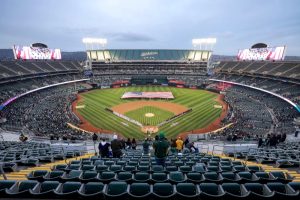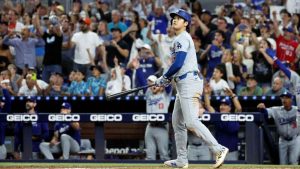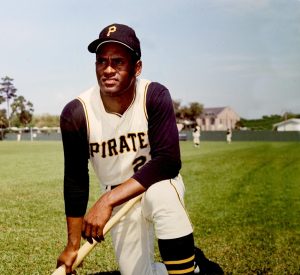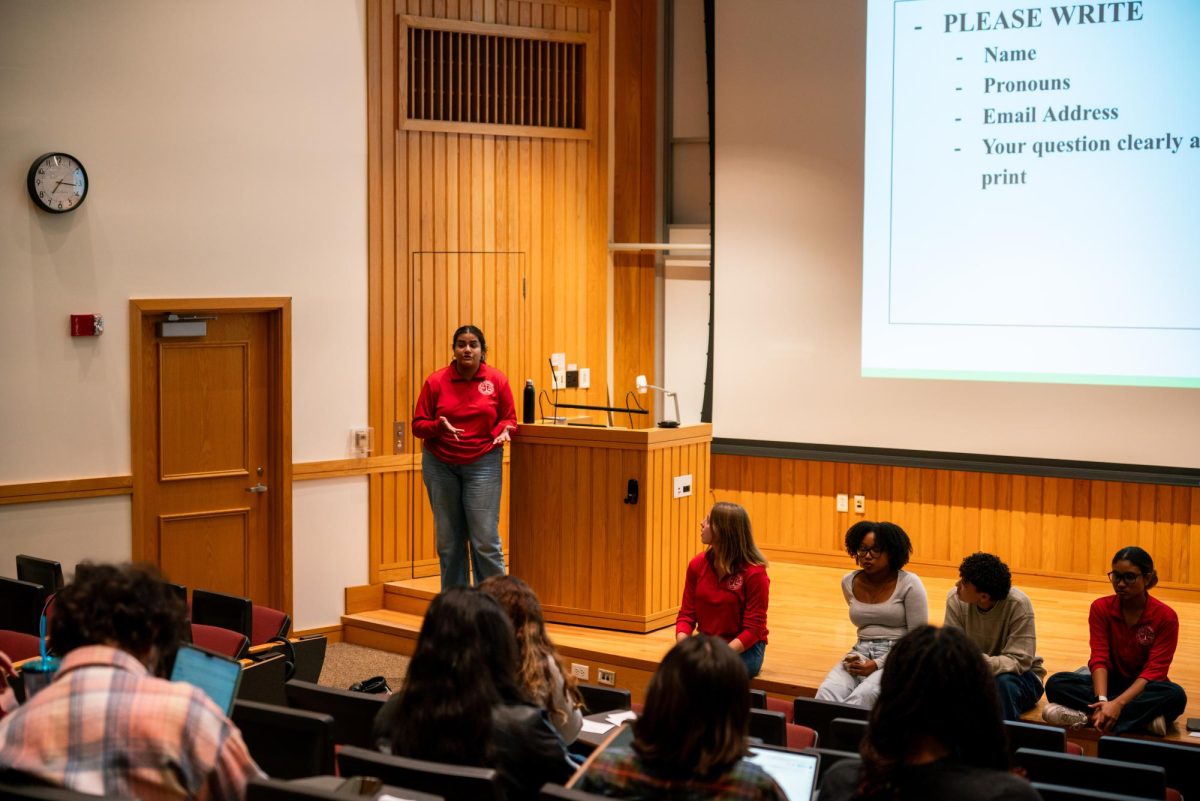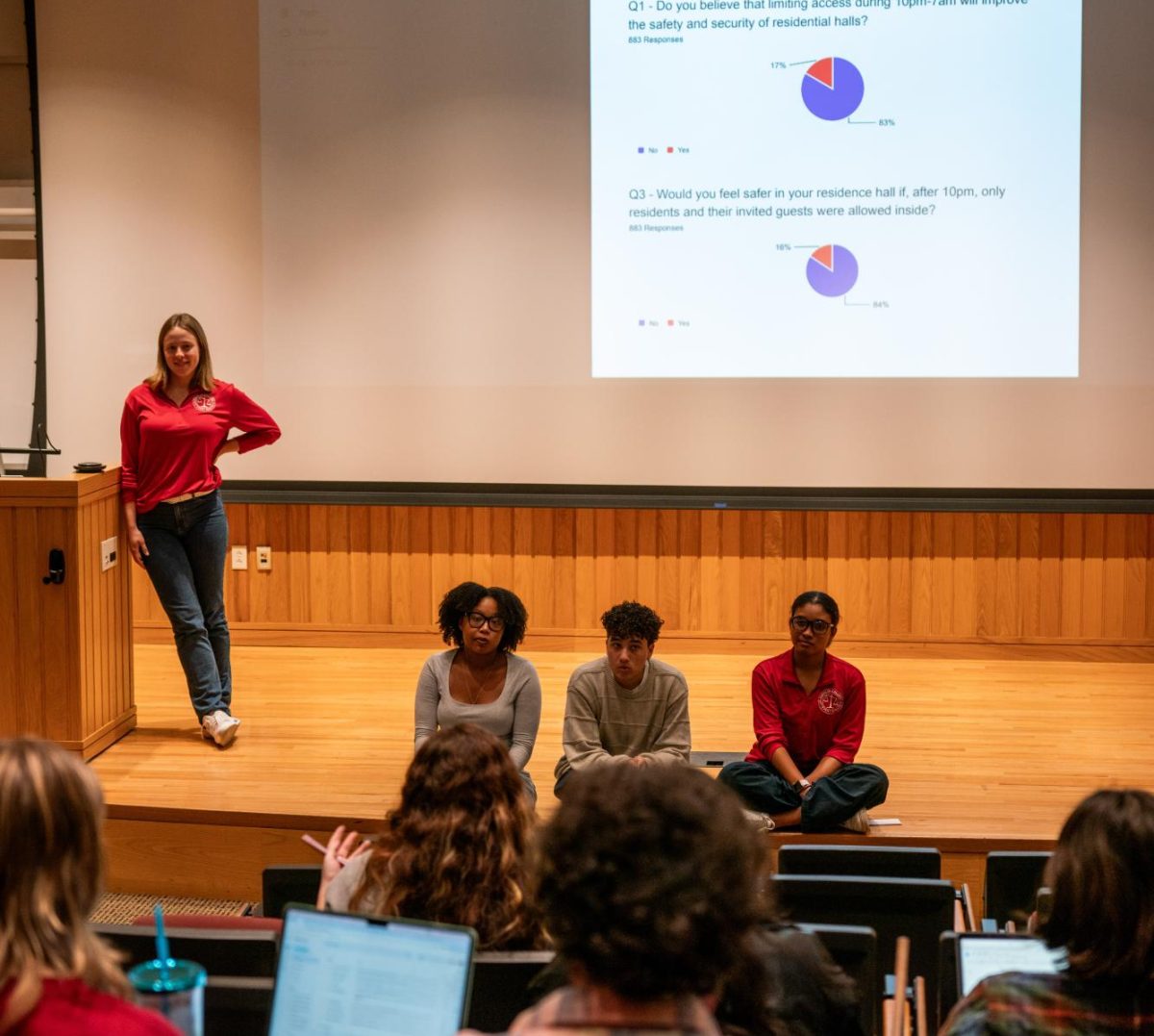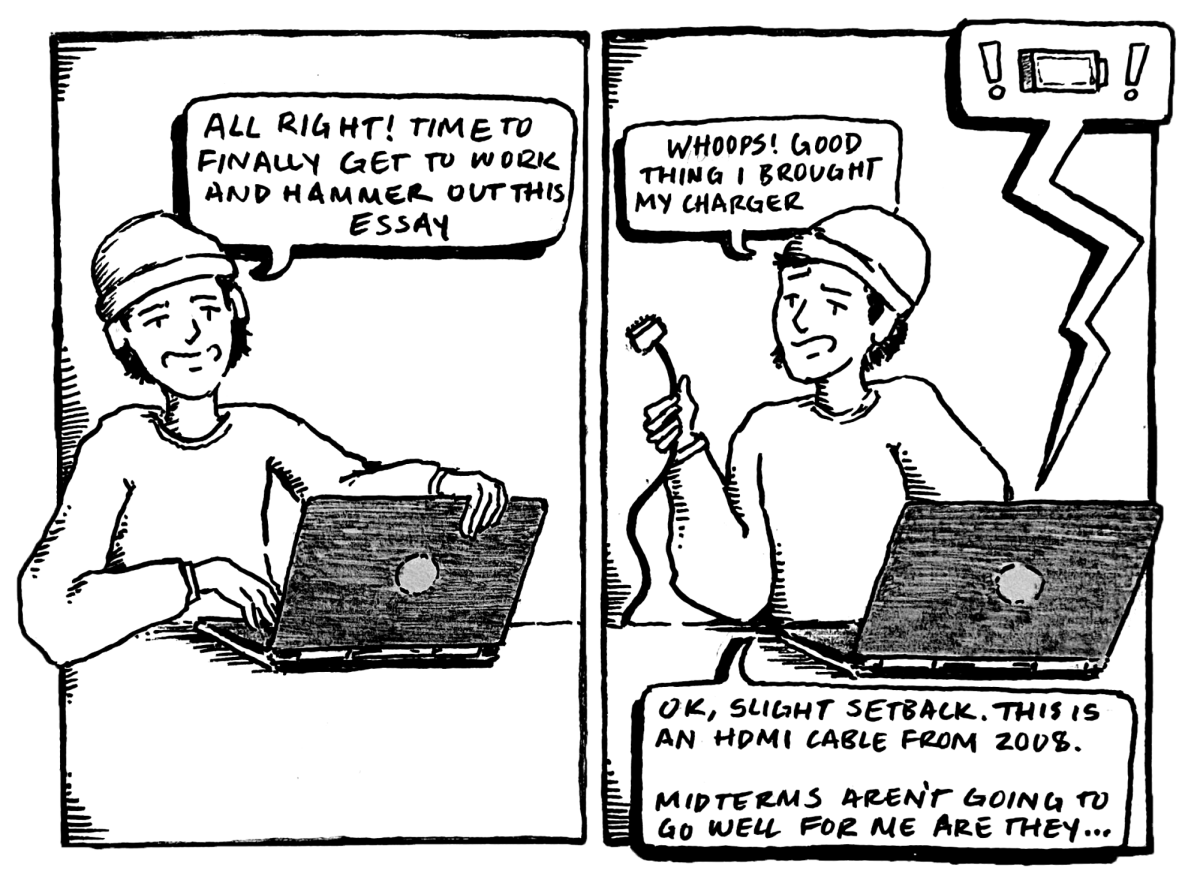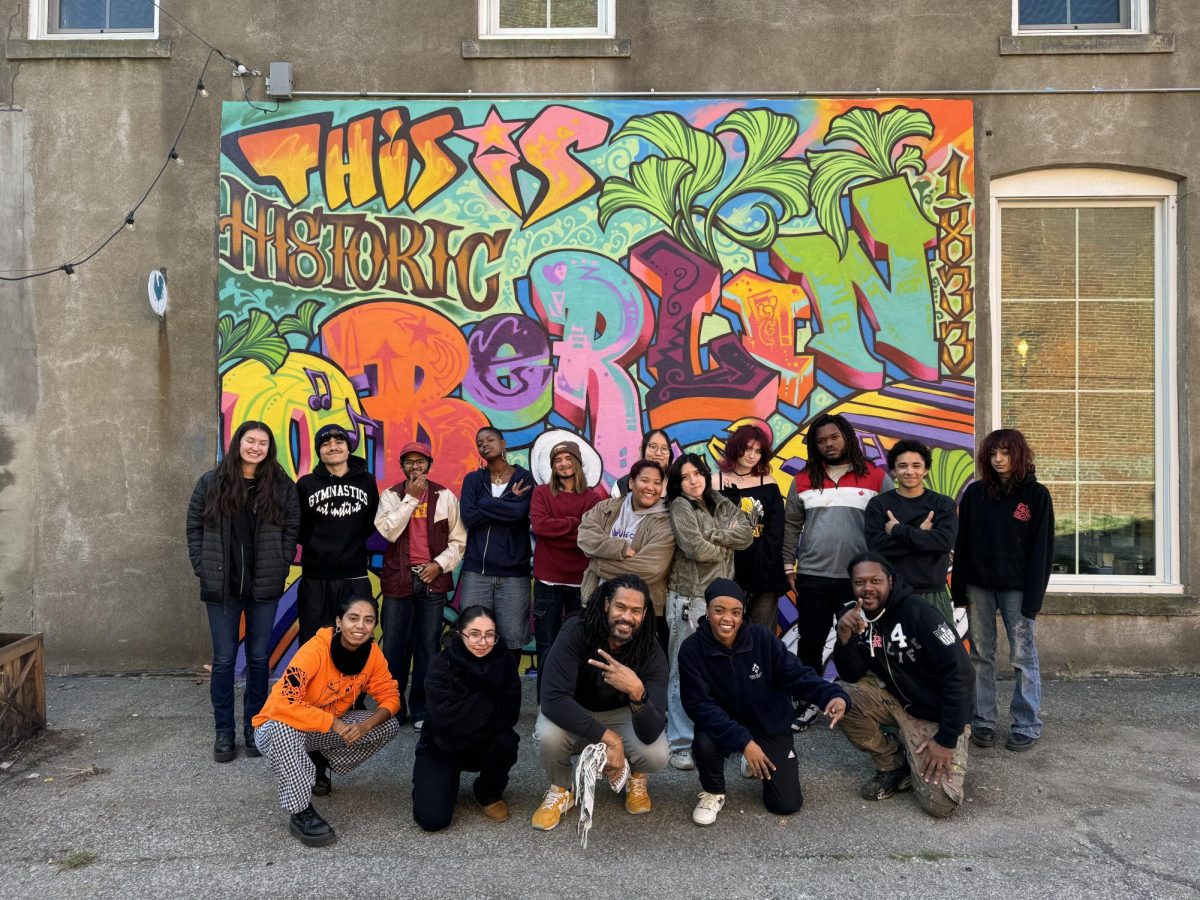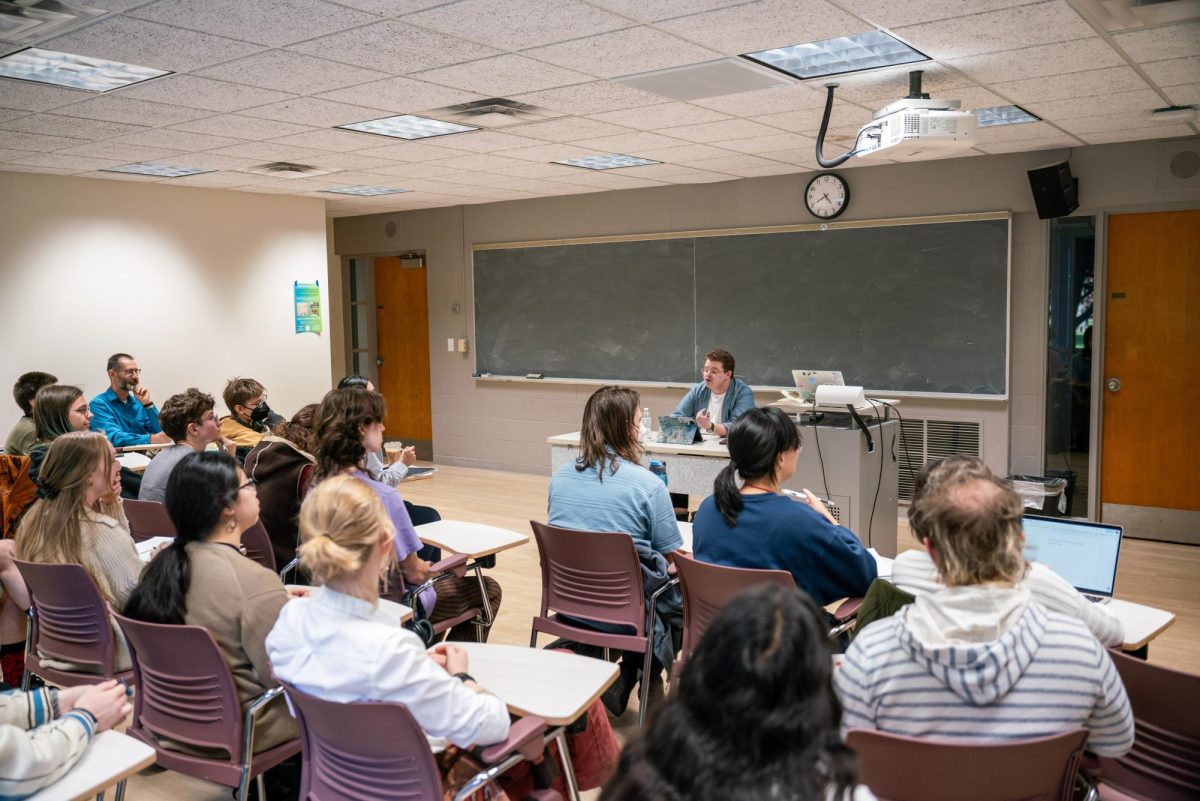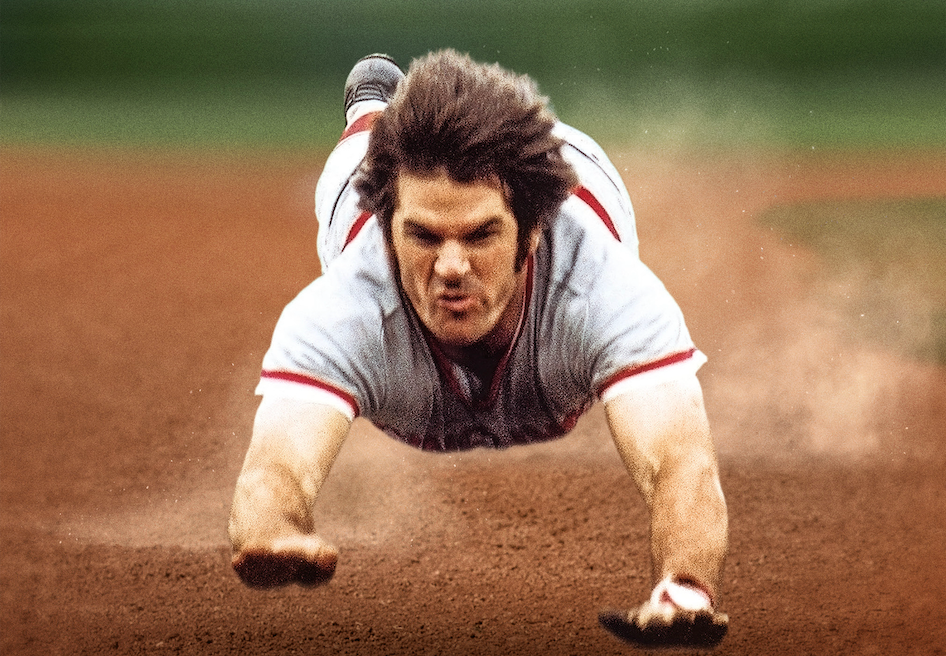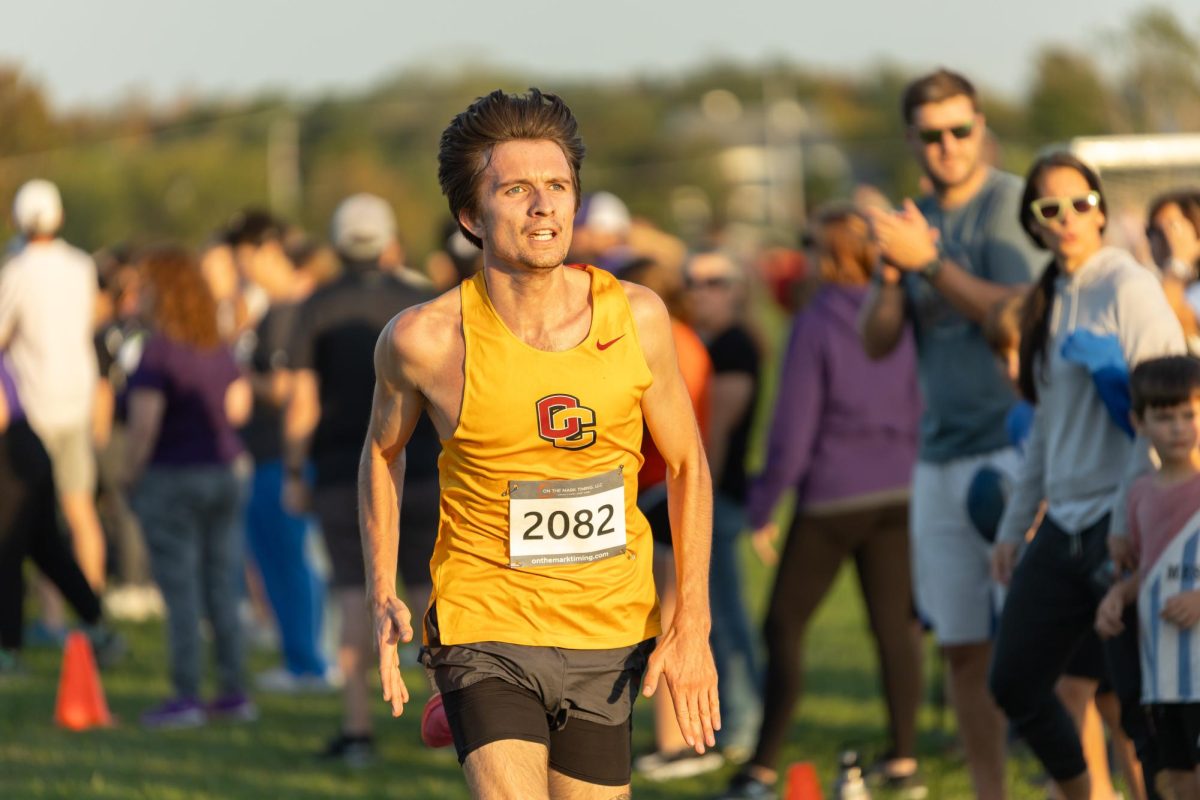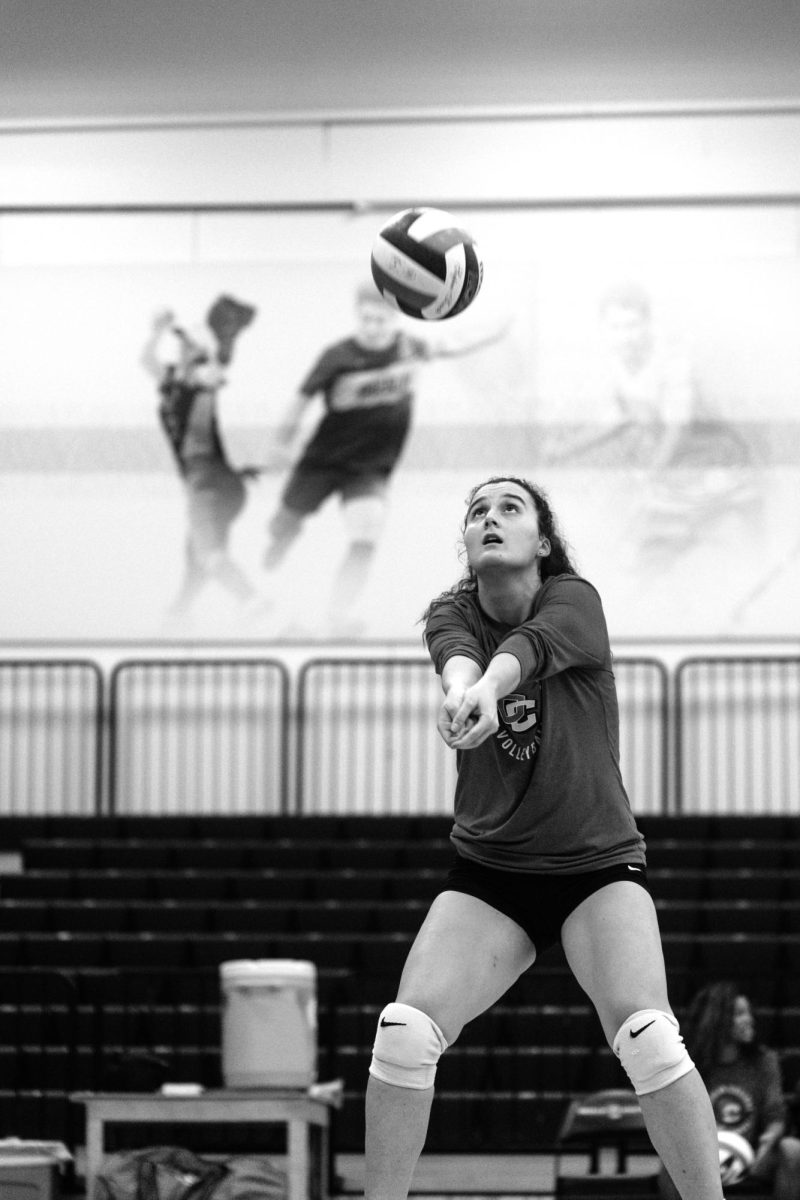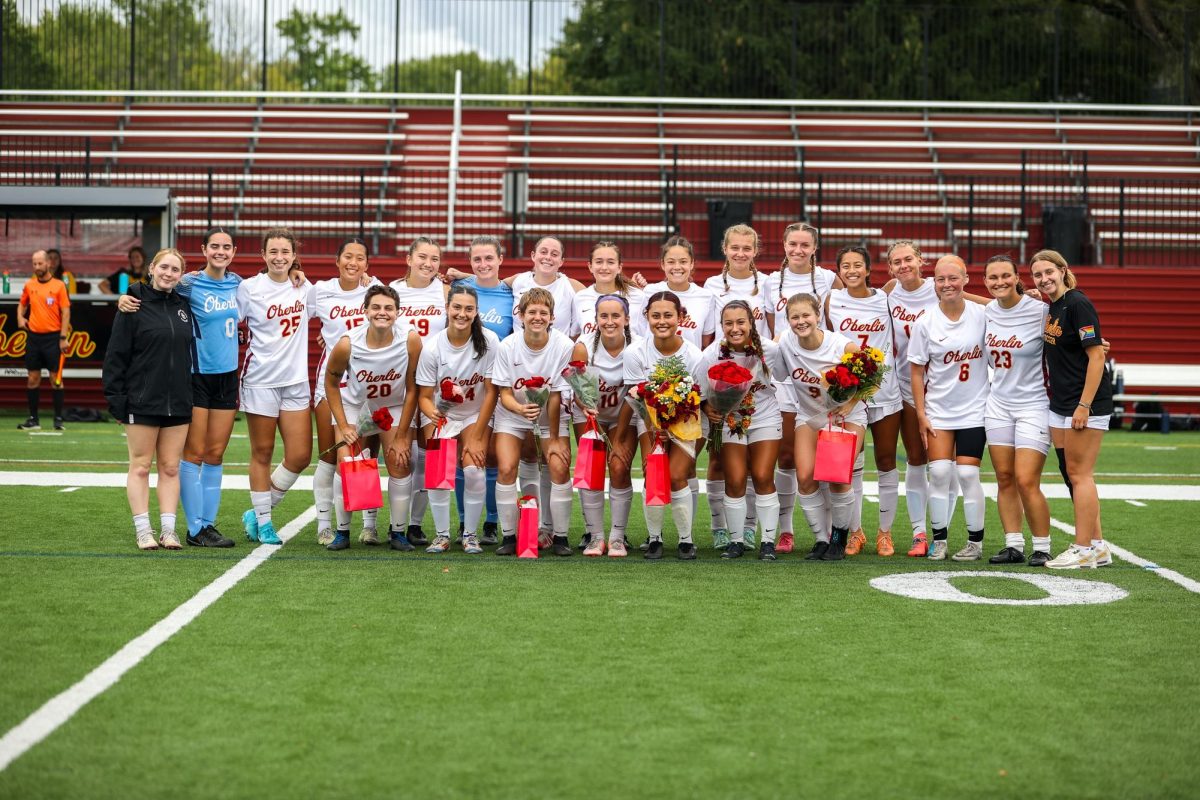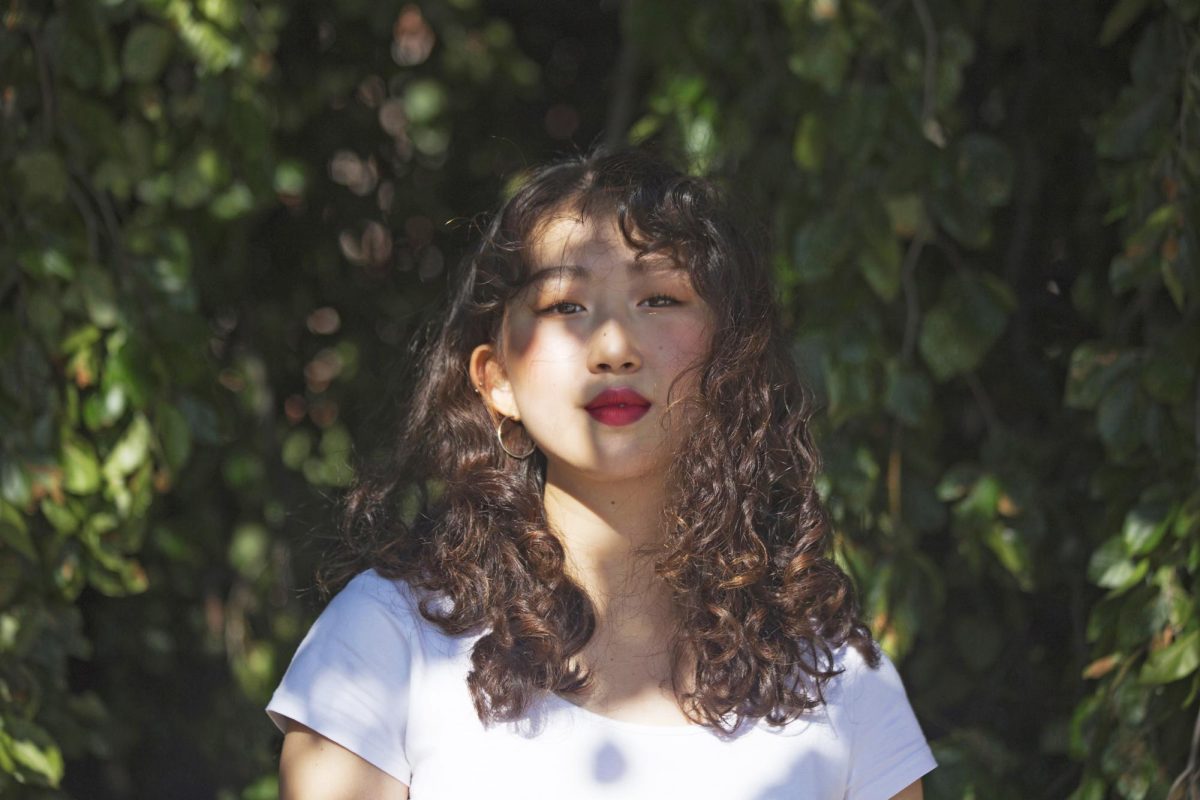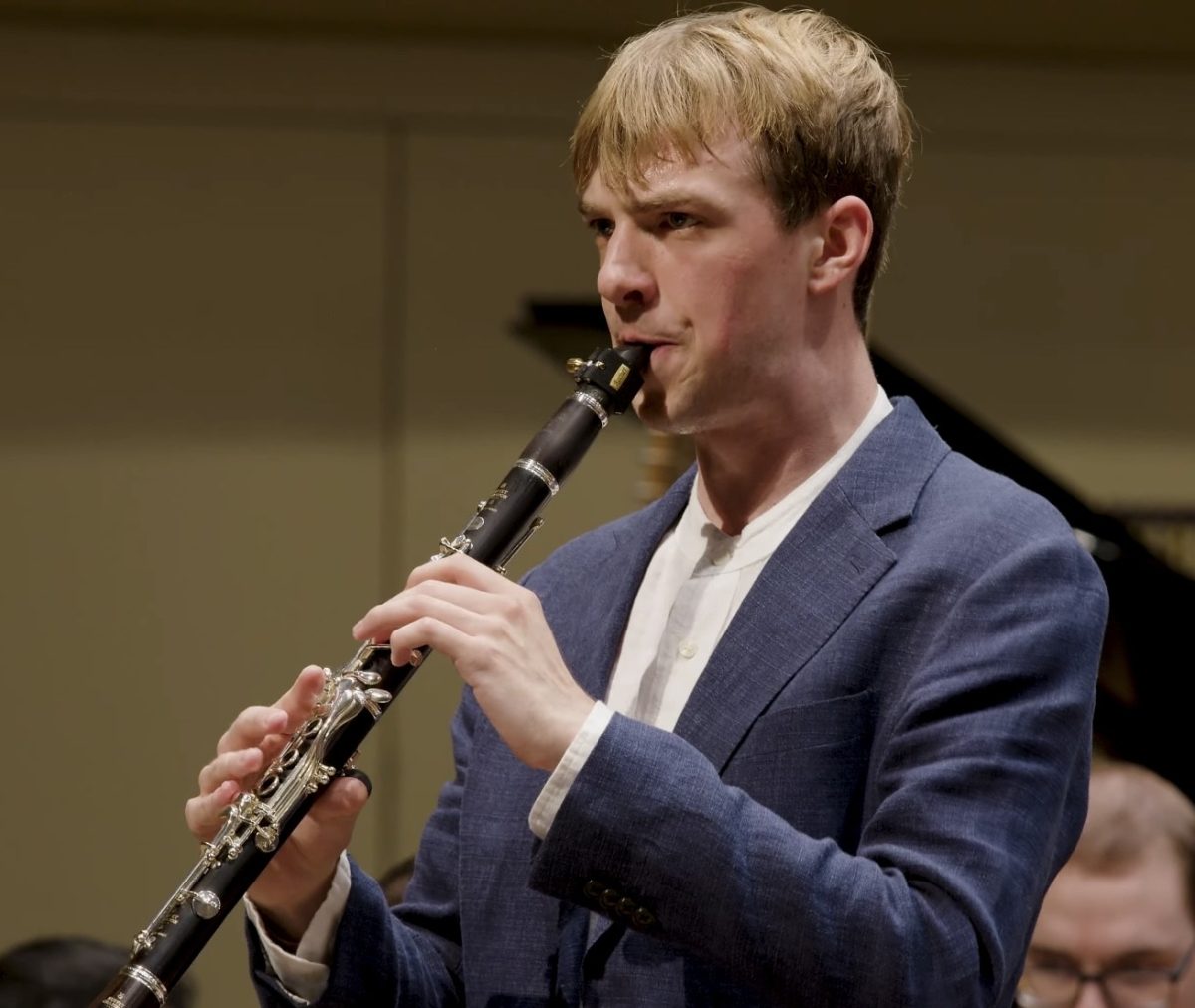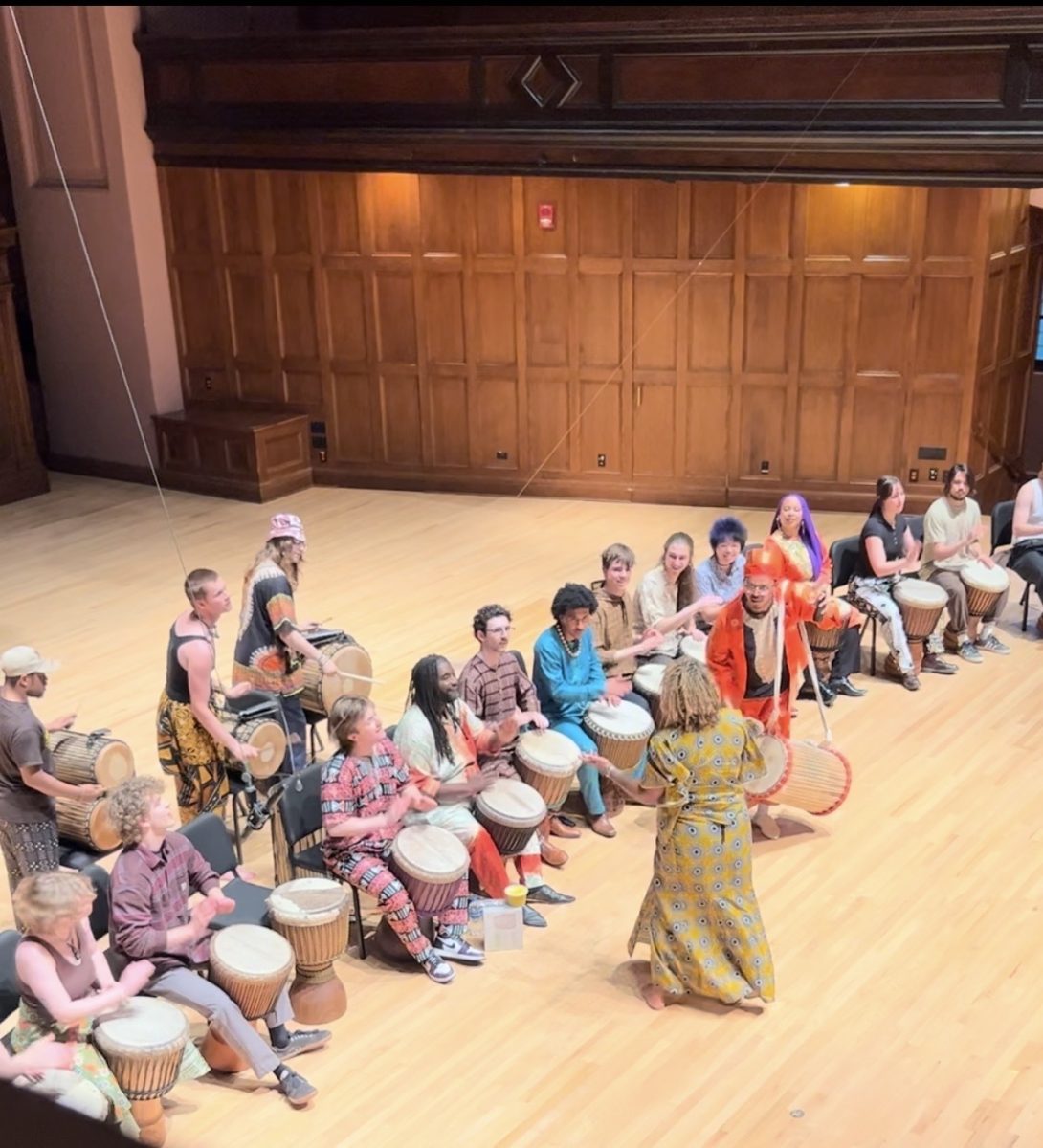No Curators Needed: Faculty Art Show Demonstrates Mastery, Cohesion
September 28, 2012
Whether you’ve taken classes with them, know them personally or don’t know them at all, the Studio Art faculty members deliver more than a few surprises in their uncurated exhibition. Plenty of political critique blended surprisingly well with abstract artworks that most likely had personal meaning to the artists and definitely struck a chord with the attendees who kept streaming into the Baron Gallery. The exhibition opened in time for the Oberlin Illuminate kickoff a week before, but the official opening took place Friday, Sept. 28, and attracted plenty of students, faculty, staff and community members.
Assistant Professor of Integrated Media Julia Christensen, who is currently on maternity leave, had a slideshow projection that emanated a pleasant glow visible from outside the gallery. A work showcasing drawings and photographs of natural growth in parking lots, the piece led viewers to reassess the minuscule amount of moss or grass shooting from a crack in the asphalt in gentrified spaces.
Across the slideshow was a video work by Nanette Yanuzzi-Macias, associate professor of Studio Art. A screen running a recording of the Pussy Riot trials in Russia was accompanied by another screen where, streaming live from her studio, Yanuzzi-Macias read the closing statements of artists in the U.S. who had been subjects of controversy. Although the acoustics of the room prevented the viewers from fully hearing her narrative, she successfully created a backdrop and established her connection with the trials.
Visiting Assistant Professor of Studio Art Don Harvey’s works were two artist books, bound in a way that created a zigzag, leading to two life-sized prints of a man with a graphically distorted, symmetrical face. Using red, black, gray and blue, the highly graphic works contained blocky shapes and texts alluding to theater and existentialist philosophy, while the figures on the wall, raising their arms in a confrontational manner, echoed Magritte’s “The Son of Man” due to their centered positions and altered faces. Although slightly esoteric, the works were visually stunning and pulled in viewers.
One of the most magnetic works in the show was Young-Hunter Professor of Studio Art John Pearson’s large-scale piece of a symmetrical, circular shape; its use of jarring neon green made it both difficult and entertaining to behold. One had the impression of falling into the piece after several moments of standing in front of it.
Next to Pearson’s works were three silkscreen prints by Visiting Assistant Professor of Studio Art Graham MacDougal. Utilizing art history texts that he repeatedly faxes, his screens depict magnified ink blotches or print errors as a result of the Pop Art–esque process.
Moving into the back gallery, small paintings of different sizes cover the right side of the wall, all done by Associate Professor of Studio Art Sarah Schuster. She described them as a series of “natural and man-made disasters,” and the accuracy with which she painted explosions, conflict and, in one instance, the infamous volcano eruption in Iceland, was striking.
Visiting Assistant Professor of Studio Art Susan Umbenhour had several reliefs that used colorful shapes and elements of drawing, with layer upon layer creating an organic three-dimensional shape out of two-dimensional surfaces, placed in deep frames hung on walls.
Visiting Assistant Professor of Studio Art Jennifer Ray’s works had an oddly attractive, morbid quality to them; she had printed large photographs of objects from shooting ranges, such as a deer leg or damaged Polaroids. Underneath harsh, studio-like lighting, the damaged objects appeared to be a representative critique of the relationship between humans and nature, a theme that Ray’s works often deal with.
Professor Edward Suquay had a detailed, handmade model of an airplane that was 1/32 in scale. While some beholders expressed interest in touching the object, it was ultimately Suquay himself who, when speaking with a small child, removed the plane from its pedestal and allowed the little boy to touch it, pointing out various aspects of the plane. His action, as well as the work itself, blurred the lines between art objects and toys, although most observers would deem the plane a work of art when they found out it was not factory-made.
Art Department co-Chair and Professor of Studio Art and African American Studies Johnny Coleman had a wooden sculpture that he described as depicting an elder spirit. Its anthropomorphic qualities were subtle, but definitely present, and the different kinds of woods he used complemented each other in a way that caused one to keep looking at the piece, observing the different colors and textures of the sculpture.
It was curious that the show did not have a curator, although several faculty members explained it with a simple question: “Who would have curated it?” Some faculty members also joked about the disorganization of the department, citing the delayed official opening of the show as another example. Looking at how all of the pieces were organized in an unobtrusive and almost organic way, however, no one could claim that the show was anything less than spectacular. The works, just like the faculty, came together in a natural way that simply made sense and inspired those lucky enough to engage with them.


